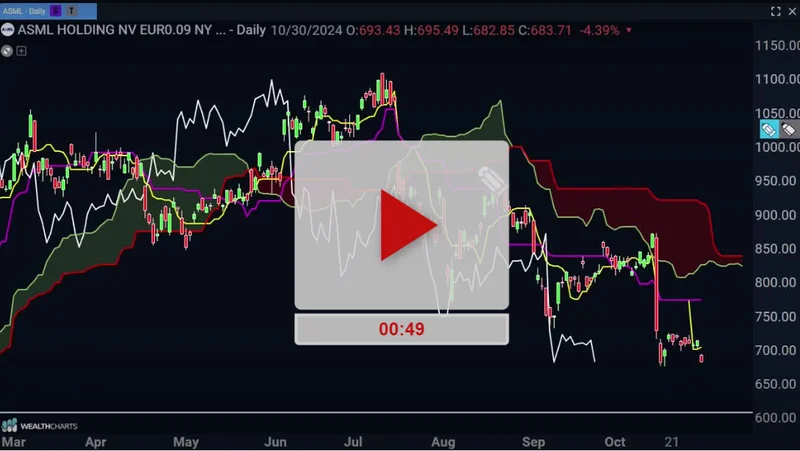Let's get one thing straight. Reading an Eli Lilly earnings report these days isn't about finance. It's about witnessing the creation of a new financial gravity. The numbers they just posted for Q3 2025 are so absurd, so completely untethered from reality, that they feel like a typo from a sci-fi novel. Revenue of $17.60 billion when Wall Street was hoping for a measly $16 billion and earnings per share of over seven bucks when the "experts" were guessing five and a half—a performance that prompted CNBC to report that Eli Lilly blows past estimates, hikes guidance as Zepbound and Mounjaro sales soar.
You can almost hear the frantic clicking of keyboards on Wall Street, analysts scrambling to update their spreadsheets as the Lilly stock ticker glows a radioactive green. This isn't a company anymore. It's a money-printing machine bolted to a rocket ship, and its fuel is a single, magical molecule: tirzepatide.
CEO Dave Ricks got on CNBC and called tirzepatide the "real star here." That's the kind of corporate understatement that makes my teeth ache. Calling tirzepatide—the active ingredient in Mounjaro and Zepbound—the "star" is like calling a supernova a "bright light." This single drug is rewriting the entire economic future of a $600 billion corporation. They raked in over $10 billion in a single quarter from just two brand names for the same stuff. Zepbound sales are up 184%. Mounjaro, 109%.
These aren't growth numbers. They're conquest numbers. So when Ricks says they're seeing "global demand," what he's really saying is, "We've created a product that a significant portion of the global population now feels they cannot live without." And how long will that feeling last? What happens when the next, better thing comes along, or when the long-term side effects start making headlines?
Of course, a gold rush this big attracts a lot of prospectors. Over in Denmark, the folks at Novo Nordisk must be chugging coffee and throwing darts at a picture of Dave Ricks. They’re the chief rival, and they’re getting absolutely steamrolled. Lilly’s drugs now account for nearly six out of every ten prescriptions in this class. That’s not a lead; that’s a lap.
You can see the desperation in their moves. Novo just launched a hostile bid for some U.S. biotech firm called Metsera, literally hijacking an offer from Pfizer to do it. It’s a mad scramble to buy anything that might help them catch up. This is a bad sign for them. No, "bad" doesn't cover it—this is the corporate equivalent of panic-swiping on a dating app an hour before the bar closes.

Ricks, on the other hand, is playing it cool. On the earnings call, he dropped this little gem: "of course, everybody would like to be in our position, but we're focused on defending it and mostly just executing the play we have." Translation: "Yeah, we see you flailing over there. Good luck with that." It’s the calm, terrifying confidence of a casino owner who designed the games himself.
And their "play" is getting more aggressive. They're not just selling to doctors anymore. They're going straight to the people. This partnership with Walmart to sell discounted Zepbound vials for cash is a genius, if slightly sinister, move. It’s about cutting out the insurance middlemen and building a direct, lifelong relationship with the customer. I mean, patient. Sorry. It’s so easy to get those two confused these days, especially when you’re talking about a product people will likely be on for the rest of their lives. It's a subscription model for your own body.
If you think this is the peak, you haven't been paying attention. The injectable drugs are just the appetizer. The main course, the thing that will truly cement their dominance for a decade, is the pill. Orforglipron. An experimental oral obesity drug. Think about that. No more needles. Just a simple pill you pop with your morning coffee. The market for that isn't just big; it's basically everyone. They’re already ramping up production for a "broad global rollout." They ain't waiting for the ink to dry on the FDA approval.
This whole operation is a masterclass in vertical integration, from manufacturing to direct-to-consumer sales channels. It's so slick, so perfectly executed, that only one thing can mess it up: raw, unpredictable politics. The company even had to mention that their rosy new guidance—bumping their expected revenue up to $63.5 billion for the year—doesn't account for Donald Trump's threatened tariffs on pharmaceuticals. It’s the one variable they can’t control, the one chaotic wrench that could be thrown into their perfectly calibrated machine.
And maybe that’s the part that gets me. I look at these numbers, this strategy, and the sheer scale of it all, and I feel a weird mix of awe and dread. Then again, maybe I’m the crazy one here. Maybe this is just the price of progress, the messy business of solving a global health crisis. But I doubt it. When a company's net income jumps from under a billion to over five and a half billion in a single year, its not about health anymore. It’s about building an empire.
I just had to argue with my own insurance company for forty-five minutes last week to get them to cover a generic antibiotic. An antibiotic! And here we have Lilly creating a direct-to-consumer pipeline through Walmart. The system is so fundamentally broken, and this is just the most glaring, profitable symptom.
So, what’s the real story here? Forget the talk about patient outcomes and innovative science for a second. That's the marketing copy. The real story is that Eli Lilly has successfully turned a chronic health condition into the most profitable recurring revenue stream in modern history. The drugs clearly work, but the machine built around them is designed for one thing: perpetual growth. We're not just witnessing a healthcare revolution; we're witnessing the financialization of the human body on a scale we've never seen before. And the house is collecting its chips.